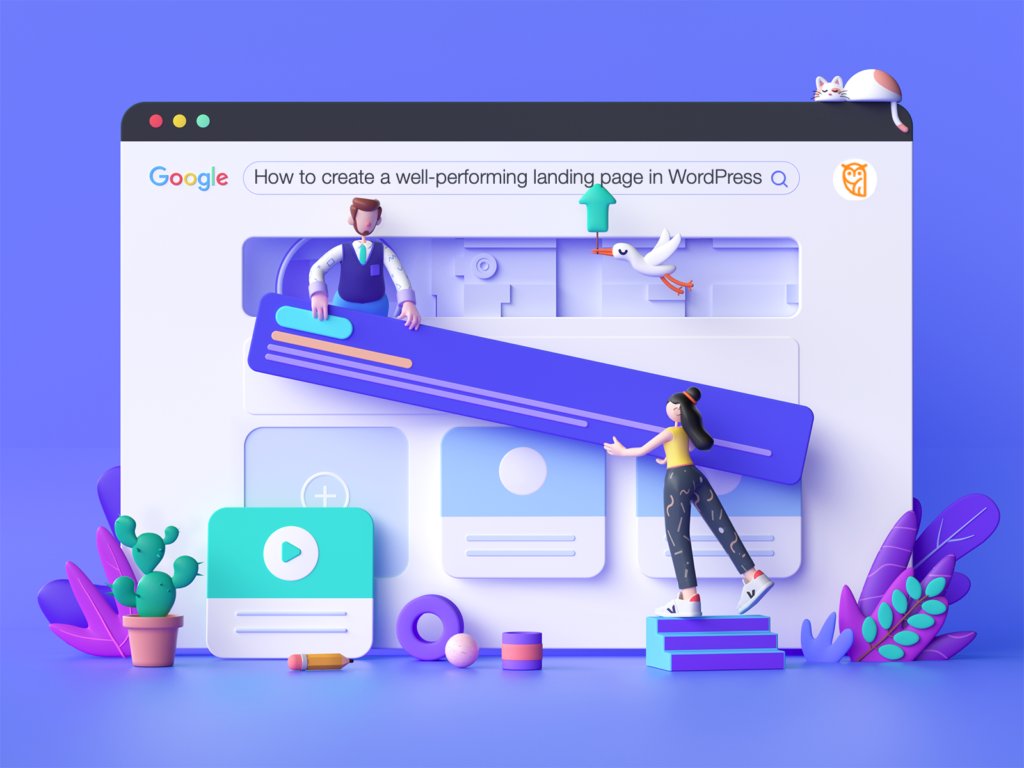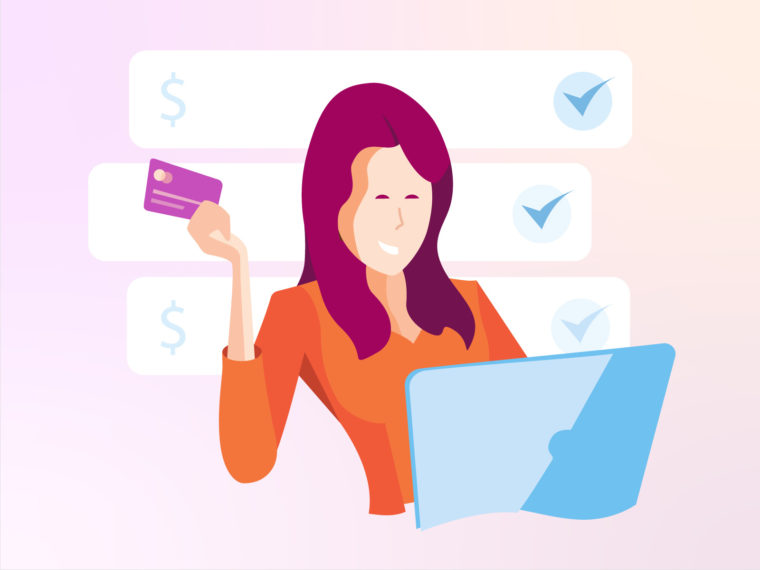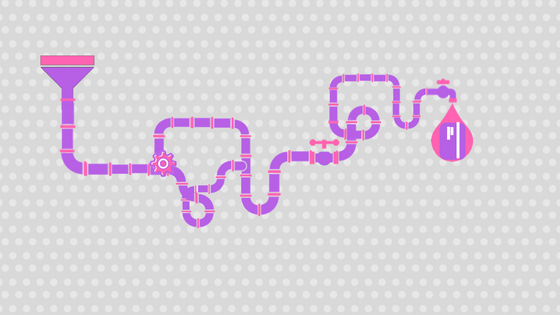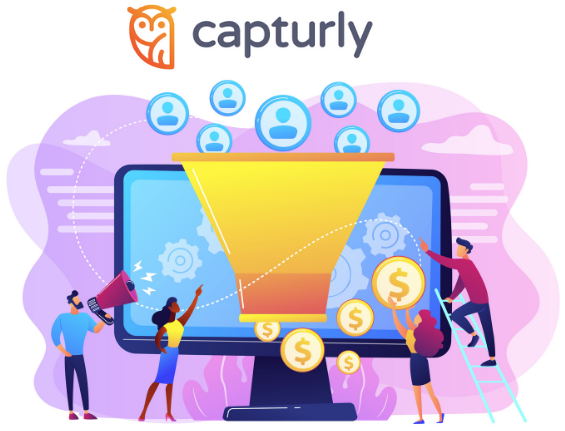Do you feel like you’re not getting the success you should be getting with your conversion funnel? Don’t worry, there are probably many ways how you can change your funnel and make it more successful.
You have an irresistible offer and a very nice product, but your conversions are just not where they should be. Does this sound familiar to you?
If you have a website, you have some form of conversion funnel already.
It might just be that you haven’t realized that yet! However, it seems like you still have a long way to go in terms of optimization.
If you don’t have the conversions you want to have, then it seems like you’re a long way off making your conversion funnel successful.
Or, you’re just starting and want to start strongly so that you won’t have to make any changes later on. Then, this article will be the one you should turn to because we will show you the exact steps you need to take to create a successful conversion funnel.
Want to increase your conversions and earn more? Then let’s get started!
What is a Conversion Funnel?

A conversion funnel is practically anything you put on your website. You might not think about this in this way but it’s true. Why do you create blogs and optimize website copy? Your goal is to get your customers to take action.
Whether that’s making that purchase of your product, or simply making a click, subscribing to your newsletter – your ultimate goal is to have a high conversion number and earn as much as possible, right?
The funnel is the process that sifts your website visitors into buyers of your product or service.
At the start of the funnel, there are many customers and visitors to your website. This is the awareness stage of your funnel.
Then comes the interest stage of your funnel. This is where your customers get interested in your product and are curious about it.
Next, there’s the desire part. This is where your customers will not only need your product, but they will WANT it. And this is where you want to have your customers. There will not be as many visitors in this funnel, but what is left is very likely to result in conversions.
Lastly, there’s the action part of the funnel. This is where you want your customer to take action and make the purchase, or subscribe to the mailing list. The percentage will be much lower than that of the awareness stage.
This is what you need to know about the conversion funnel before you start to create yours.
How to Create and Optimize a Website Conversion Funnel
Every part of your funnel should lead them to the final goal of your website. Whether that’s making a purchase or taking action, you should know clearly what that is.
Here are the steps you need to take to create a successful website funnel.
Step 1: Identify Your Goal

The first part is very important: you should have a clear purpose of what you’re trying to achieve with your website.
Is your goal to sell as many products as possible? Then your final goal is making as many sales as possible.
Are you looking to grow a mailing list? Then you want people to subscribe to your mailing list, and you should center your marketing efforts around that goal.
Take some time to think about what you’re trying to achieve with your website. Once you identify what that is, your marketing efforts will be more streamlined and also much clearer.
Step 2: Research Your Audience Thoroughly

The first thing you should do is research your audience and make sure you know what a typical customer looks like.
You won’t be able to optimize your funnel if you don’t even know precisely who you’re addressing. If you don’t recognize this, you won’t know how to guide them effectively from the awareness stage to the action stage.
This process involves creating customer personas. This guide by HubSpot clearly shows you how to create customer personas in more detail.
A customer persona is practically an imaginary person you create based on who your perfect customer seems to be.
You might want to learn the following things about your customers:
- Their age
- The area they live in
- Their employment status
- Their education status
- Where they work, and what they do
- Do they have children?
- How they behave
- What is their personality
All of this comes into account here, and more. And the more you know, the more targeted your campaigns will be, and the more conversions you’ll be able to get because you’ll be able to optimize your conversion funnel according to the buyer persona.
Step 3: Create Optimized Landing Pages

Let’s start at the top of the funnel, at the awareness stage. At this stage, you’ll want to generate as much volume as possible on your website. At the moment, it’s all about quantity and as many leads as possible.
But you’ll also need to know how to turn these customers into quality customers. He who does that will be more successful.
An optimized landing page should be straight to the point and should have a clear call to action button. This landing page can occur on any part of your website.
The goal of the landing page should be to provide as much information and as clear information as possible that will get your potential clients interested. Maybe that’s a free trial of your service or a demo.
Most of the CTA buttons should be above the fold of the landing page. Below the fold, you can provide more useful information about your service or products. Ultimately, the landing page should lead the customer down the funnel and towards your ultimate goal.
Step 4: Drive More Traffic to Your Landing Pages

As we’ve already said, you want as many people as possible to gather on your landing page. If there’s no traffic on the landing page, then there’s simply no potential for sales.
So at this stage, your focus should be to grow your traffic as much as possible.
However, that is easier said than done. It requires focused attention and in some cases, a good budget, too. However, some strategies have proven to be more effective than others to drive more traffic.
It might be the hardest part of the funnel, this one. But being persistent with your marketing is the key here.
Consider these methods to drive more traffic to your landing page.
- Social Media Marketing. Yes, social media marketing is also a big hit, but it’s been around for ages now. You can use Facebook ads, Twitter ads, Pinterest marketing, Instagram marketing, or other social media platforms to market your website and generate interest. You should be responsive on social media and above all, active with your posts. These should be interesting and engaging, too.
- Ads. Yes, these are mostly paid ads, but they can work wonders if they are well designed. Whether it’s Google ads, Facebook ads, or other paid ads, these will generate a lot of traffic to your landing page. But be prepared to spend some money on these.
- Content Marketing. Nowadays, there is simply no business out there without content marketing. Whether that’s email marketing, blog, case studies, white papers, or other pieces of content – these are proving to be the main driving force for traffic. Good content is necessary to drive customers down the funnel. It educates customers and proves that you’re offering value before you take something from them in the first place.

Yes, creating educational content such as blog posts can boost your conversions by up to 131%! This is the reason why big companies, and small companies too, need to create awesome blog posts regularly.
This falls very much into the awareness stage, and it might just be one of the best ways to win your customers and transfer them to the interest stage of your funnel.
So if you can rank your content and answer specific questions with your blog posts, you’ll practically be tapping into a huge pool of potential customers that are looking for answers to these questions online.
Additionally, you’ll want to create content that educates customers about your particular service, product, or offer. Blog posts will work well, although you might want to use a variety of content types, such as infographics, white papers, research papers, reports, and much more.
Creating such content does a few great things for you:
- It established trust from your customers
- You become an authority in your field
- By answering questions, you’ll tap into a massive pool of potential customers online
Step 5: Add Positive Testimonials and Customer Reviews

Now, this is a tactic that the majority of businesses are already utilizing, and you also should be doing the same.
Nowadays, having customer reviews on your sales page or landing page is a must. We’ve already said that people decide with emotion, but they need to back those emotions with proof. And what better way to show them proof that your product/service works than displaying customer reviews?
It might be at the bottom of your sales page, or if you’re selling a product(s), they might be on the product description page.
They might be reviewing your customers have left on your website, or you can pull reviews from Trustpilot, for example (which can be done with a special widget).
Testimonials also play a huge part in your email campaigns. You should constantly add testimonials to emails, especially to emails selling your products or service.
Step 6: Start an Email Marketing Campaign

Once you have generated enough traffic to your website, you might want to start collecting your visitor’s emails.
However, this requires more effort than you might think. You can’t just say “Give me your email now”. This doesn’t work.
Instead, you will have to give something in return – customers should recognize some value before you ask them to give you their emails. But if you do it right, this can be a crazy good lead generation technique that will never go out of date.
And then once you do collect these emails, it’s all about the follow-up.
Here are some lead magnet ideas that will allow you to collect emails:
- Statistical reports,
- White papers,
- Studies,
- Checklists,
- Free trials,
- Guides, courses,
- Informational pieces,
- Newsletter,
- Blog subscription,
- Long-form content with value,
- And more.
As we’ve already said, your lead magnet should be full of value. It should be free, and in return, you are getting the email address (then check if the emails are valid). Sweet, right?
However, you do need to follow up. Here’s how.
- Send a welcome email once they sign up.
- Offer another freebie in the follow-up email,
- Add customer testimonials to increase interest,
- Examples of how your product or service works,
- Pitch your potential customers with the final email.
Step 7: Use Attractive CTA Buttons

The most visible part of your funnel should be your CTA buttons. But what makes a good CTA button in terms of design?
- The good text inside the button that’s short but sweet
- The well-designed shape of the button
- The color of the button is extremely important – it should stand out on the page, but again, it should not be too bright – use opposite colors
- The placement of the CTA button is also valuable. Ideally, you should have one button above the fold, and up to three buttons on one page at most
But the CTA button might not be just to get your customer to buy. For example, you might have a button on your blog post page which encourages readers to subscribe to your blog post.
Step 8: Use Text Calls to Action
Yes, buttons are not the only way to attract customers to take action. Many people ignore the flashy graphics, and consequently, they don’t see the CTA buttons on your page.
For example, for someone who likes to read the content instead of watching graphical elements, creating text calls to action is necessary.
This is especially great for blog posts, where you encourage the reader to move further down the conversion funnel, and it might be to get them to subscribe to your blog or to get that free report you’re offering on your page.
The blue text with hyperlinks is always attractive to readers because it’s different than the rest of the content, and it’s effective for encouraging them to take action.
Step 9: Enhance Your Checkout Process

Now, this is a larger tip, and it involves different actions you can take to make your checkout page more effective. The fact that more than 69% of customers abandon your cart at the last minute goes to show just how much potential there is to improve your conversions here.
Here are the things you can do to improve your checkout process:
- Allow customers to checkout as guests – nobody wants to be forced to create an account before they purchase, so it might be an unnecessary distraction that puts off your customers and causes them to leave.
- Improve the speed of the funnel – another tip that should not be ignored, and it’s in fact, one of the more important ones here. The cart should flow quickly, and if it’s too slow, your customers might get frustrated and leave.
- No trust signals – along the way, you should make it clear for customers that the checkout is secure by displaying various security badges.
- Unclear additional fees – get rid of unnecessary and unclear fees, and make it clear to the customer how much the price is with the shipping fee.
Step 10: Identify and Fix Holes in Your Funnel

Even once you complete the funnel and make it work, your work is far from done.
Now, you will have to identify the weak points of your funnel and try to fix it at all times. Many say that this is the hardest part of your funnel.
Some additional software types and tools will allow you to keep track of your customers and your funnel easier. These include CRM software, email tracking, social media tools, and more.
Use web analytics such as heatmaps, session replays, and traditional analytics, and more to identify these leaks and fix them.
Overall, your conversion funnel is a constant work in progress and it will demand you to stay consistent with your marketing and with the follow-up. It’s hard, there’s no denying it, but once you succeed, you’ll get a feeling of satisfaction. However, you should never stop trying to improve.
Conclusion
To conclude, there are four parts of your funnel: the awareness part, interest, desire, and action part. Every part of your funnel should do everything it can to lead your customers towards the final action.
In this article, we’ve explained the steps you need to take to create a powerful and successful funnel. Optimizing your funnel contains different actions you can take, but these tips will take your conversion funnel to another level and lead to more sales and conversions.
Learn more about conversion rate optimization best practices.
Don't forget, sharing is caring! :)


11 Comments
Saayed Khan
2020-12-30 at 18:45Thank you Capturly Team, Great informative post and explain step by step guide on how to optimize a website conversion funnel. I liked the way you shared your post with help of images and screenshot. Keep Posting!
funnel marketing expert
2023-02-07 at 06:23Great article! This was very well done and extremely helpful. I appreciate your effort to write such worthy content.
funnel marketing expert
Laura at LMnts
2023-06-29 at 18:50So glad you mentioned that funnel marketing is a never ending process. There’s always room for improvement. The more stages you measure the more data you have, and the better you can improve your conversion rates.
Thanks for sharing again.
laura
2024-01-27 at 14:25nice article.